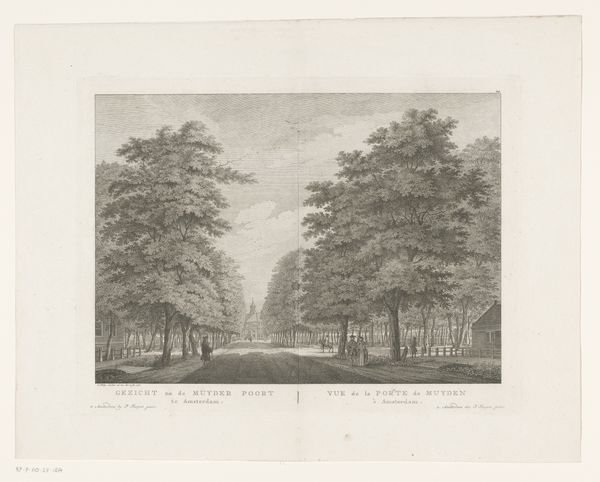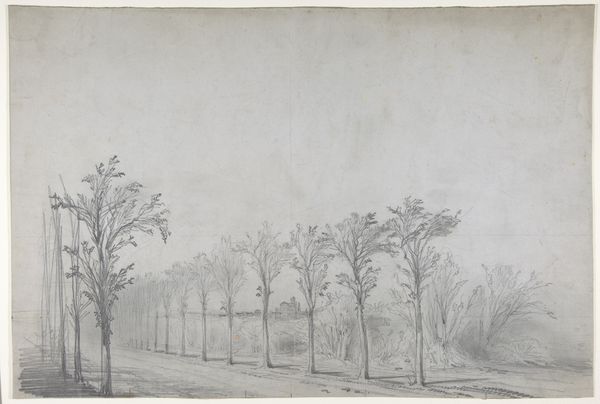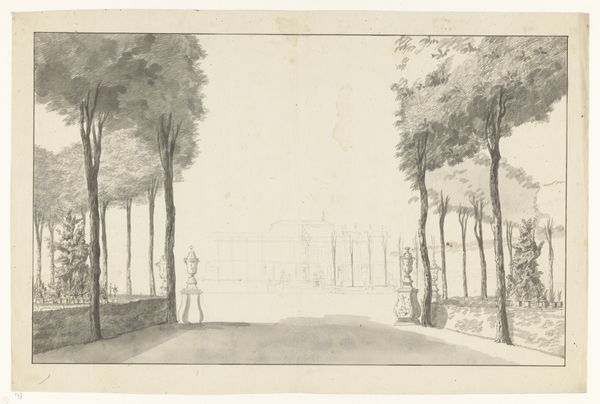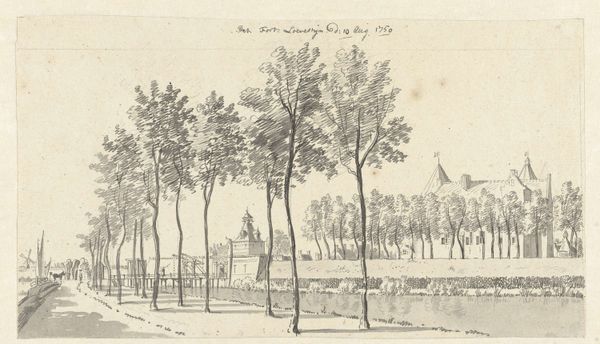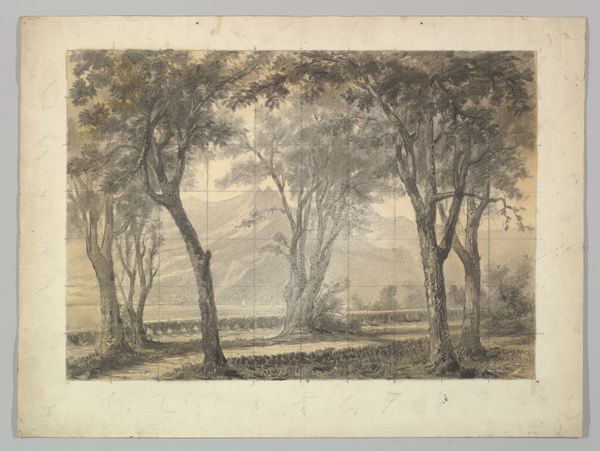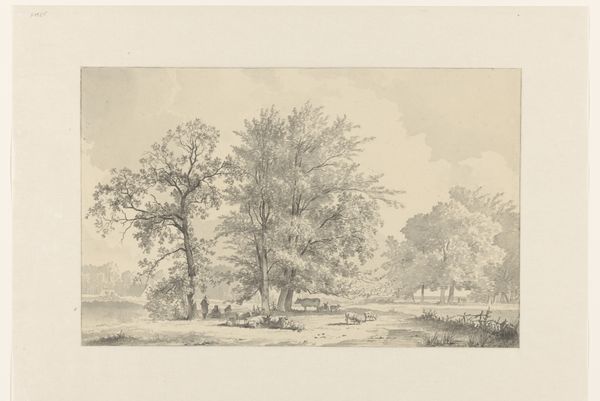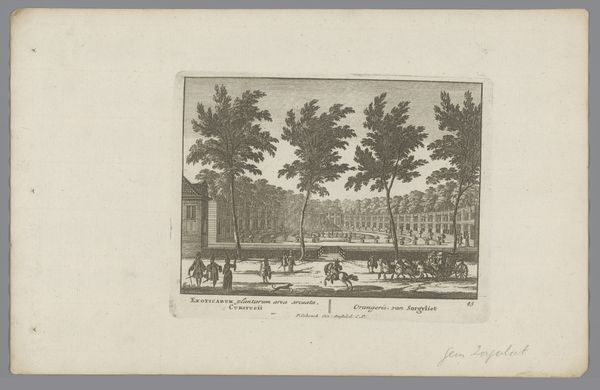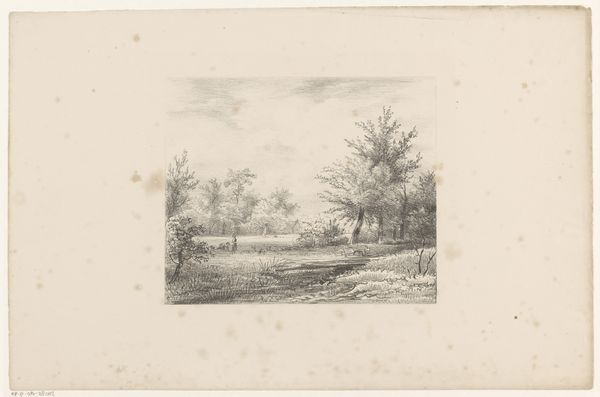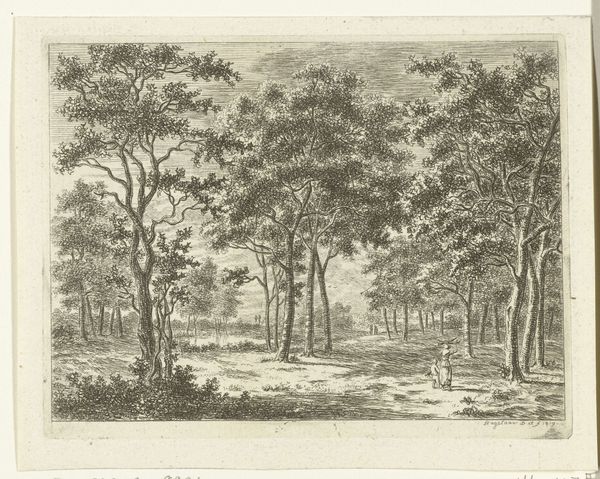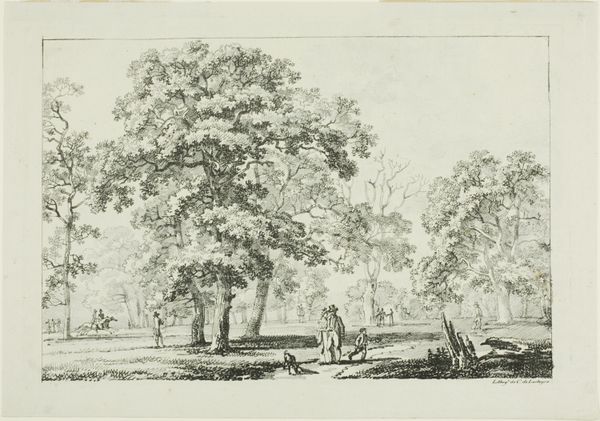
drawing, pencil
#
drawing
#
landscape
#
pencil
#
15_18th-century
#
realism
Dimensions: height 348 mm, width 507 mm
Copyright: Rijks Museum: Open Domain
Curator: At first glance, the uniformity of the trees really stands out. It’s a somber, almost meditative effect. Editor: Let's take a look at Jan Brandes' "Bomenallee te Batavia," a pencil drawing created between 1779 and 1785. The scene illustrates a tree-lined avenue in Batavia, now Jakarta. The drawing embodies elements of realism and is a beautiful example of eighteenth-century landscape art. Curator: Uniformity can often signify control. A row of trees planted in perfect sequence speaks to a kind of domination over nature. The practice of meticulously planting such alleys of trees was very common for displays of power and the social management of landscapes, wasn't it? Editor: Indeed. Looking closer at the marks and material choices, it’s also vital to remember the logistical aspect of such an artwork from this period. Paper would have been handmade, the pencil carefully crafted. Brandes, positioned within a colonial administration, also reveals his own complicity through the very act of representing the colonial space with his selection of materials, the imported paper and crafted pencil both being signifiers of colonial power. Curator: Thinking about the imagery itself, the long, straight avenue draws the eye deep into the picture plane. In European iconography, roads often represent a journey, sometimes even a spiritual quest or transition in life. Does it feel as though Brandes is inviting the viewer on a colonial journey or mission? The perspective emphasizes a sense of distance. Editor: Yes, I see your point. And this quest for progress is itself interwoven with access to certain materials; in a city reshaped by colonialism, materials such as paper become imbued with an even more charged historical and symbolic meaning, and that charge affects not just Brandes, but his audience as well. It serves to both create and reinforce the context from which the viewer approaches it, making the viewing both complex and conflicted. Curator: Reflecting on this scene, I now wonder about what these trees witnessed and shaded during those colonial years. This image invites introspection on history, doesn't it? Editor: It certainly does, and the choices made in producing this drawing further reveal that layered relationship. Considering both form and function, "Bomenallee te Batavia" delivers a powerful intersection of culture, politics, and material history.
Comments
No comments
Be the first to comment and join the conversation on the ultimate creative platform.
